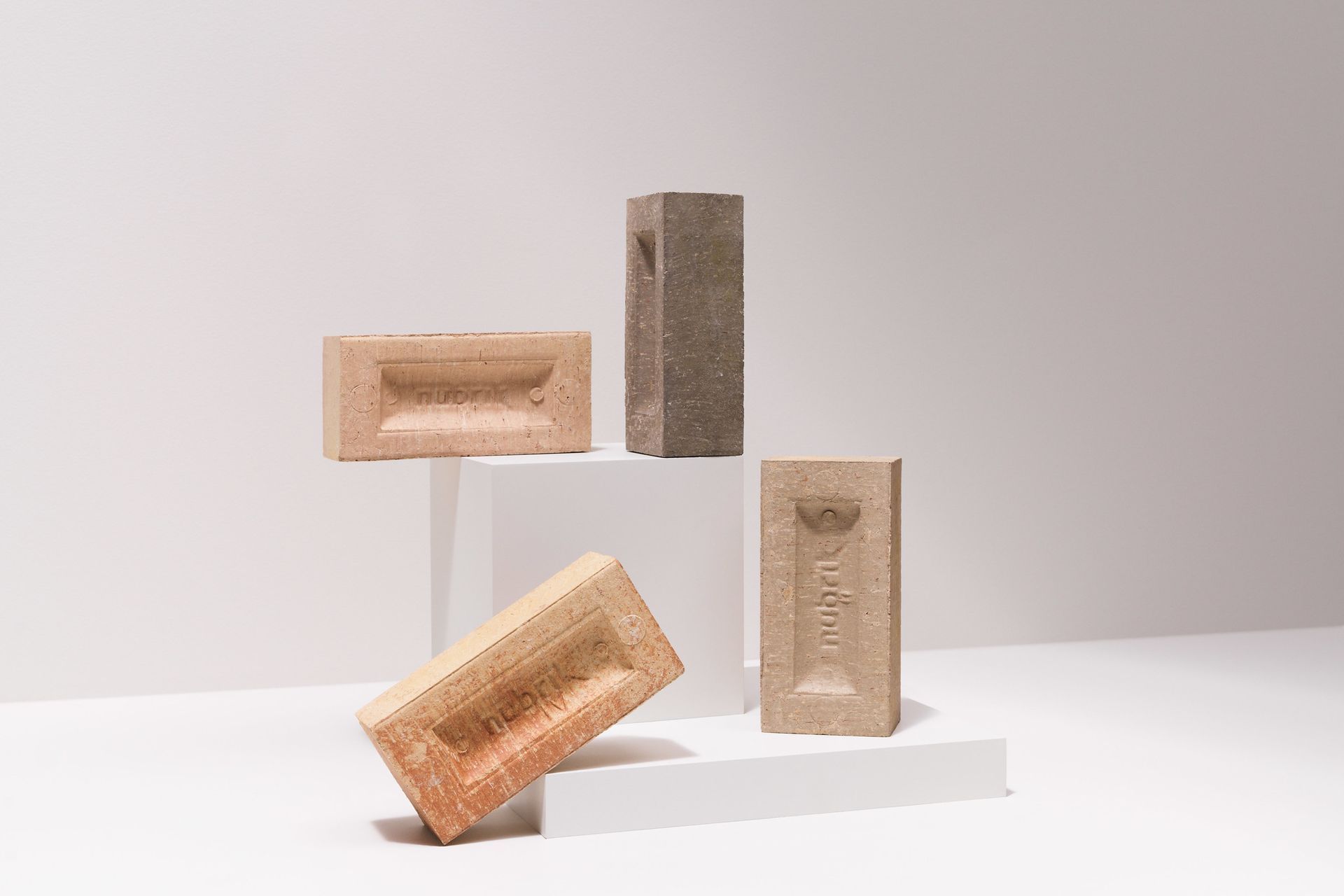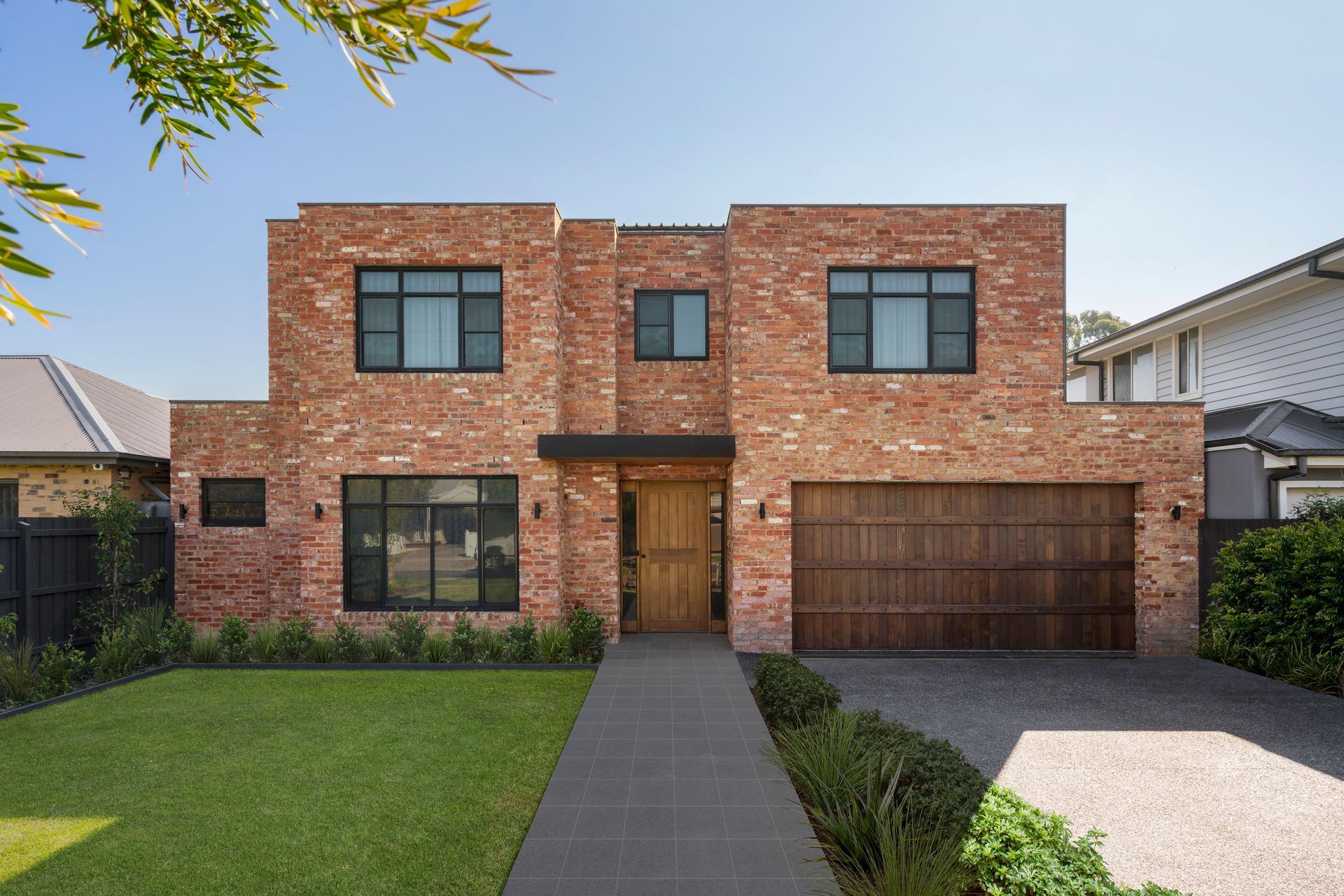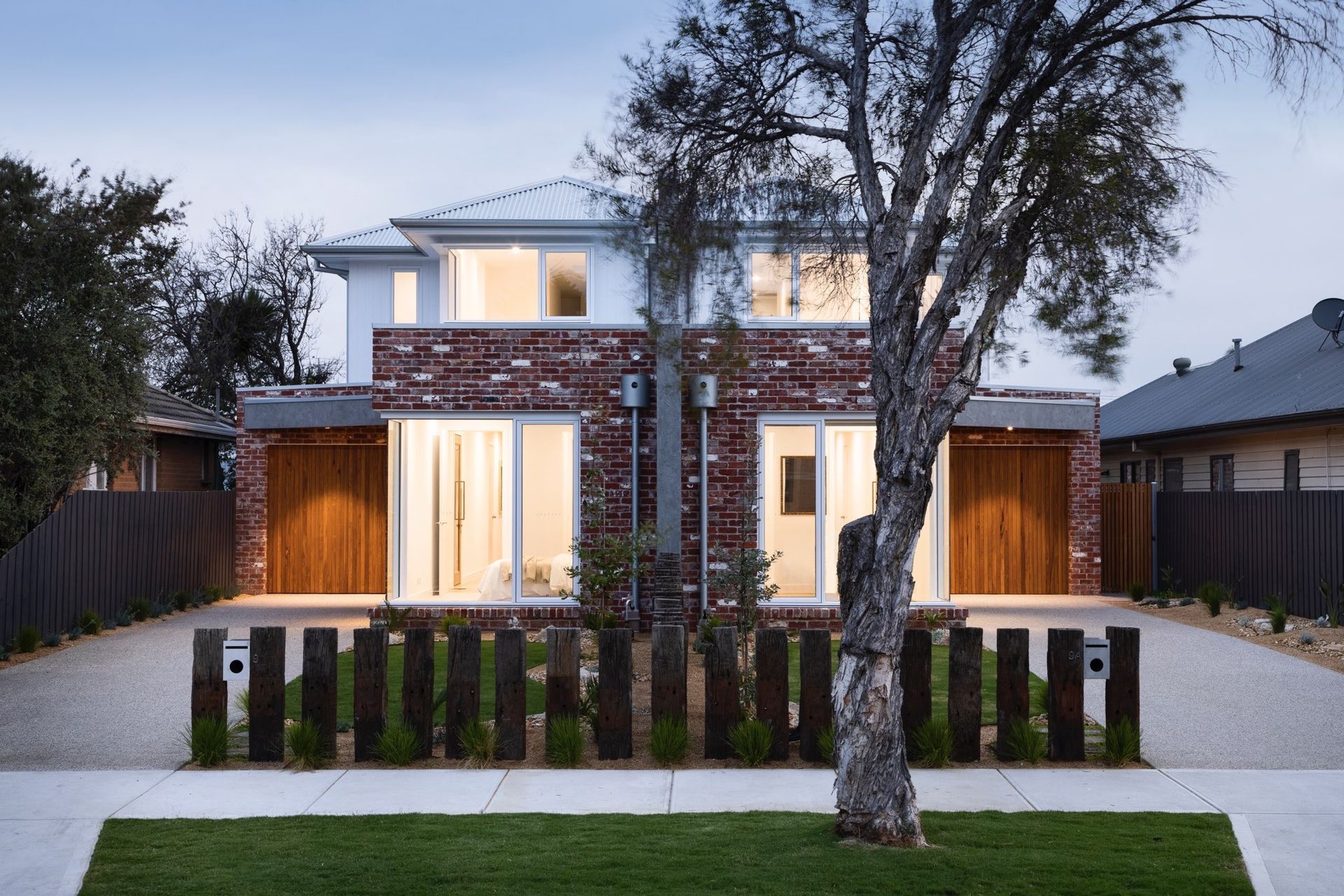Mastering the basics of bricks: a deep dive into sizes, types, and pricing

No matter the application, choosing the right type of brick involves weighing up various factors, such as price, the aesthetic a particular brick offers, size and more.
What are the sizes of bricks in Australia?
There are multiple brick sizes available in Australia, here are your standard options:
Standard Brick Size
- Imperial: 9 inches long, 4.5 inches wide, 3 inches high.
- Metric: 230mm long, 110mm wide, 76mm high.
Utility Brick Size
- Utility: 290mm long, 90mm wide, 76mm high.
Double Height or Monarch Size
- Double Height/Monarch: 230mm long, 110mm wide, 162mm high.
Modular Brick Size
- Modular: 190mm long, 90mm wide, 90mm high.
Roman Brick Size
- Roman: 290mm long, 90mm wide, 40mm high.
Linear or Long Format Brick Size
- Linear/Long Format: Typically 290mm or 390mm long, with height and width similar to standard bricks.
Thin Bricks
- Thin: Approximately 22mm to 32mm thick.
Half-Height Bricks
- Half-Height: 230mm long, 110mm wide, 38mm high.
What is the standard brick size in Australia?
In Australia, standard brick sizes are typically 230mm long, 110mm wide, and 76mm high. Other sizes are available, but these are the standard brick dimensions you’ll often see.
7 common types of bricks used in Australia
There are several types of bricks used in Australia, made from different materials and often used for different applications. Understanding what these types are is the first and best place to start.
1. Burnt clay bricks
The ‘classic’ type of brick. Burnt clay bricks are made from natural clay and often combined with other materials like shale, a fine-grained sedimentary rock. The specific type of clay used can vary, but common types include kaolin, ball clay, fire clay, and stoneware clay. The bricks are fired in a kiln, creating various textures and colours. They have a warm and natural appearance and are very low maintenance, making them a popular choice for homeowners and builders. They are widely used across residential and commercial projects.
Advantages of clay bricks
Resistance to weathering decay
Clay bricks are known for their exceptional durability in various weather conditions. Many old buildings made of clay bricks have stood for over a century, enduring harsh weather without significant deterioration. This longevity is due to the bricks' ability to withstand moisture, heat, and cold, maintaining both their appearance and structural integrity over time.
Resistance to fire:
Clay bricks are highly fire-resistant, making them a safe choice for building materials. An example of this is in areas prone to wildfires, where homes built with clay bricks often survive fires much better than those built with more combustible materials. This inherent fire resistance comes from the firing process in brick manufacturing, which makes them non-combustible and capable of withstanding high temperatures.
Pest resistance
Unlike wood or other organic building materials, clay bricks are not susceptible to pest infestations. For instance, in areas where termites are a significant concern, clay brick buildings are often preferred as they offer a natural barrier against such pests. This resistance to pests contributes to the low maintenance and longevity of brick structures, as there is no need for treatments or repairs related to pest damage.
What sizes are clay bricks available in?
In Australia, the size of clay bricks can vary, but there are standard sizes that are commonly used in the construction industry:
Standard Brick Size: This is the most common size and typically measures 230mm long x 110mm wide x 76mm high.
Utility Brick Size: Slightly larger than the standard, it measures 230mm x 110mm x 162mm.
Double Height Brick Size: This is essentially like two standard bricks stacked on top of each other, measuring 230mm x 110mm x 162mm.
Linear Brick Size: These are longer than standard bricks, used for different aesthetic and design purposes, and they typically measure around 290mm x 70mm x 162mm.
How much do clay bricks cost?
Clay bricks can vary in price depending on the style, the manufacturer, the quality and the location, but as a ballpark, expect to pay at least $800 - $1200 per 1000 bricks.
2. Face bricks
Face bricks are a type of clay brick, similar in composition to burnt clay bricks, but distinguished by a more precise selection process. This process involves careful choice of clay and a controlled manufacturing method to achieve consistent colour, texture, and durability. Unlike standard burnt clay bricks, which are often covered or used for their structural qualities, face bricks are designed to be left exposed.
They are selected for their visual appeal and are often used on the exterior surfaces of buildings, hence the name "face" bricks. Their aesthetic quality is a key differentiator; while they perform structurally like burnt clay bricks, their primary role is to enhance the external appearance of a structure.
Advantages of face bricks
Design and visual appeal
Face bricks come in a diverse range of colours, textures, and finishes. This variety allows architects and builders to create unique and striking building exteriors, adding character and value to both residential and commercial properties.
Long lifespan and low maintenance requirements
The longevity of brick is well known, with the US-based International Association of Certified Home Inspectors stating that brick will last more than 100 years before they may need replacing, and this is significantly longer than many alternative materials.
Resistance and colour consistency
Face bricks retain their colour and appearance over time due to the high-quality types of clay used in their construction. Some manufacturers will add specific pigments or minerals to the clay mixture to achieve desired colours. Adding these pigments means the colour is consistent throughout the brick, not just the brick's surface.
What sizes are face bricks available in?
Face bricks usually come in the industry standard size of 230mm long x 110mm wide x 76mm high. They can also come in other sizes, particularly for bespoke applications.
How much do face bricks cost?
Face bricks can vary in price, with it being highly dependent on application, the quality and type of materials used, the amount of bricks required and the pricing structure favoured by a retailer. However, as a guideline prices typically start at at least $1200 per 1000 bricks, but keep in mind this just a starting point.
3. Double course bricks
The term 'double course bricks', also known as double brick or cavity brick construction, has a dual meaning. The first of these refers to a construction technique which involves using two courses (or layers) of bricks to construct a wall. Each course typically consists of one layer of bricks, so two layers of bricks are used. The two courses are separated by a cavity or air gap, which can be left empty or filled with insulation material.
Each layer, or "course," is constructed independently. The outer course is typically the main structural and weather-resistant element, while the inner course serves as additional insulation and support.
The second refers to double course bricks to the size of individual bricks. In this context, it means bricks that are approximately twice the height of standard bricks, while the length and width remain similar to those of standard bricks. This type of brick is specifically designed to cover a larger area more quickly, as each brick effectively replaces two standard bricks in height.
Advantages of double course bricks
Double layering improves insulation
The advantage of double layering in double course brick construction is primarily in its improved insulation capability. The air gap between the two layers of bricks acts as an effective thermal barrier. It minimises heat transfer from the outside to the inside and vice versa. During hot weather, this reduces the amount of external heat entering the building, keeping the interior cooler. In colder weather, it helps retain indoor heat, keeping the building warmer.
Improved structural integrity
The structural integrity of a wall built with a double course of bricks is enhanced by the combined strength of two layers of bricks. Each layer contributes to supporting the structure's load, effectively distributing weight and pressure.
Double layering offers design flexibility
The design flexibility of double course brickwork stems from the ability to use different types of bricks for the inner and outer layers, enabling a variety of visual styles. For example, a building could feature a classic red brick on the exterior for a traditional look, while the interior layer could be constructed from a more cost-effective, standard brick. This approach allows for exterior design variations without impacting the structural integrity.
What sizes are double course bricks available in?
"Double course brick" often has two interpretations in terms of size. Primarily, it refers to a method of building walls with two layers of standard-sized bricks, each about 230mm long, 110mm wide, and 76mm high. These bricks are laid in two parallel courses, making the wall nearly twice as thick as one with a single layer of bricks, considering both the brick width and any space for mortar or insulation.
Less commonly, "double course brick" can also mean bricks that are twice the height of standard bricks, maintaining similar length and width. These taller bricks are double the height of standard bricks, around 152mm high or more, and are designed to cover a larger area more quickly, as each brick replaces two standard bricks in height.
How much do double course bricks cost?
Specific pricing for double course bricks can be difficult to gauge as pricing largely depends on the pricing used for the 'layering'. However, as a ballpark for two layers of standard-sized bricks (230mm x 110mm x 76mm), costs range from $1,000 to $3,000+ per 1000 bricks. Double-height bricks, around 152mm high, may have different pricing due to their larger size and the efficiency in coverage they offer.
Related article: Weatherboard vs. brick: a look at the pros and cons of each
4. Concrete bricks
Concrete bricks (or blocks) consist of a mix of cement, water, sand, and aggregates (like small stones or gravel). The mixture is poured into moulds to create the desired shape and size and then cured (hardened) in a controlled environment. Concrete bricks are known for their uniform size and shape, and they come in a range of densities, depending on the specific application, and offer an alternative to clay bricks.
Advantages of concrete bricks
Longevity and robust nature
Concrete bricks are very durable. They are less susceptible to weathering and degradation over time compared to other materials. Their composition gives them a robust structure, making them ideal for use in load-bearing walls and other structural applications where strength is crucial. This durability also means concrete bricks can withstand harsh environmental conditions. For example, concrete is very dense, meaning it can withstand freezing and hot temperatures. Its density means it does not expand or contract when the temperature changes, so the bricks won't crack or warp.
Fire resistance
Concrete bricks are highly fire-resistant. They do not burn, melt, or emit toxic fumes when exposed to fire, which makes them a safer choice in areas prone to wildfires or for buildings where fire safety is a concern.
What sizes are concrete bricks available in?
Concrete bricks are available in the standard brick size of 230mm long x 110mm wide x 76mm high. However if you're purchasing concrete blocks they are typically larger with dimensions of 390mm long x 190mm wide x 190mm high.
How much do concrete bricks cost?
Like the other types of bricks we've looked at so far, concrete bricks will vary in size depending on size and application, but expect prices to start at around $1000 per 1000 bricks or blocks.
6. Recycled or reclaimed bricks
Recycled or reclaimed bricks refer to previously used bricks that are salvaged from demolished or renovated buildings and then cleaned and repurposed for new construction or renovation projects. These bricks carry a unique appeal, often bearing marks of history and character that new bricks lack. They are sourced from older structures, and each brick typically has a weathered appearance and texture, which can add a distinct aesthetic to new buildings or restorations.
Using recycled bricks is also an environmentally friendly practice. It reduces waste by reusing materials that would otherwise contribute to landfill and decreases the demand for new brick production, which in turn lowers energy consumption and emissions associated with manufacturing
Advantages of recycled or reclaimed brick
Sustainability
Using reclaimed bricks significantly reduces the environmental impact of construction. It decreases the need for new brick production, which involves energy-intensive manufacturing processes and raw material extraction. By repurposing existing materials, the use of reclaimed bricks contributes to waste reduction, as it diverts these bricks from landfills and reduces the carbon footprint associated with new brick production.
Unique design and appeal
Reclaimed bricks have a unique character and historical charm that new bricks can't replicate. They often feature a weathered look, with variations in colour and texture, adding a distinct and authentic aesthetic to buildings. This rustic appeal is especially valued in restoration projects or in new constructions aiming for a vintage or industrial style. The use of reclaimed bricks can create a sense of continuity in historical neighbourhoods or add a distinctive touch to modern designs.
Cost-effective solution
In some cases, reclaimed bricks can be more cost-effective than new bricks. While the initial cost per brick might be similar or slightly higher, the overall cost of the project can be reduced because reclaimed bricks may require less processing, finishing, or painting.
What sizes are recycled or reclaimed bricks available in?
Recycled or reclaimed bricks are usually available in the standard brick size of 230mm long x 110mm wide x 76mm high.
How much do recycled or reclaimed bricks cost?
Recycled or reclaimed bricks often start at around $1000 - $1500 per 1000 bricks.
7. Custom bricks
Custom bricks are bricks that are made to order, according to the specific needs of the customer. This can include bricks of a specific size, shape, colour, or material. Custom bricks can be used for a variety of purposes, including on the exterior of a home, but also more unique architectural applications such as features on buildings, arches and columns.
You can also find custom bricks on exterior features such as patios, walkways, and garden features such as outdoor fireplaces.
Advantages of custom bricks
Architectural freedom
Standard bricks typically come in limited shapes and sizes, whereas custom bricks give you the opportunity to break these limitations. You can create intricate curves, angles, and bespoke shapes that reflect what you're trying to create.
Improved performance in specific circumstances
Custom bricks can be made with varying strengths and densities to handle specific load requirements, ensuring greater structural integrity for your project.
What sizes are custom bricks available in?
The sizes for custom bricks can be a little hard to pin down; they are custom, after all! The size of the bricks will depend heavily on the application and type of brick being customised.
How much do custom bricks cost?
The price someone can expect to pay for custom bricks depends on the amount they need and the application. Most bricks will start at least $1 per brick, so expect to pay at least $1000 per 1000 bricks.
A versatile building material
Brick is one of the most flexible and versatile building materials available. They are robust, pleasant on the eye, last a lifetime and can be used for a tremendous amount of building applications. Hopefully this guide has given you some idea about the sizes you can expect to find when you're in the market for bricks, how much you'll pay and some of the different styles and types available.








